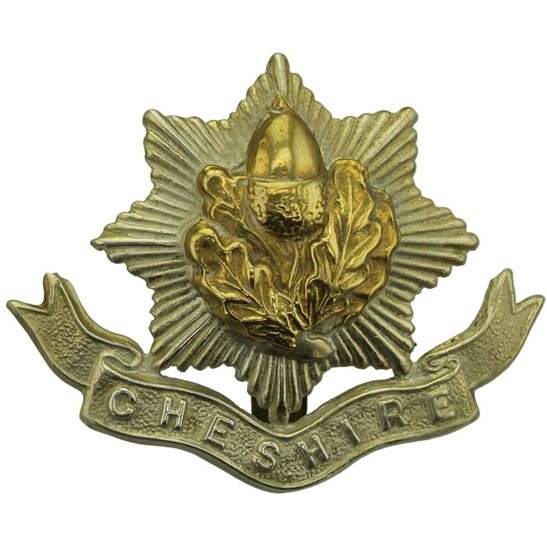Personal Details
Born: 23 August 1878 in Broughall, Whitchurch, Shropshire.
Family: He was the third of twelve children born to John Thornton, a farm labourer, and his wife Mary Jane. He married Mary Moores on 24 February 1904 in the Wesleyan Chapel, Whitchurch and together they had two children, Nellie and George Herbert. Sadly, Mary died in 1916; Herbert married Elizabeth Palin in 1918 in Whitchurch and together they had four children – Doris Elsie Palin, Mildred, Jack and Bob.
Residence: In 1881, he was living with his parents and siblings at Melverley, Whitchurch; by 1891 the family had moved to Green End, Whitchurch. Herbert was serving with the military in South Africa at the time of the 1901 Census. In 1911, having married, he was living with his wife and first child at 43 Tilstock, Shropshire. In 1939 he was living at 22 Tilstock where he continued to live until his death.
Employment: He enlisted in the military in 1898, serving through until his discharge in 1915, including a period in the Reserves. On his attestation in 1898 he stated his occupation as labourer. In 1911 he was a domestic gardener and in 1939 a general labourer.
Died: 17 April 1947 in Tilstock.
Military Details
Regiment: Cheshire Regiment
Rank: Private
Service Number: 5823
Date of Enlistment: 8 September 1898
Date of Discharge: 27 July 1915
Reason for Discharge: No longer physically fit for war service
Other Information: He suffered a gunshot wound to the spinal column which led to his discharge; no trace can be found of Herbert being awarded a Silver War badge. He served in South Africa in the Boer War.
William was awarded the Campaign Medals (1914 Star, British War medal and Victory medal)

The 1914 Star (also known as 'Pip') was authorised under Special Army Order no. 350 in November 1917 and by an Admiralty Fleet Order in 1918, for award to officers and men of the British and Indian Expeditionary Forces who served in France or Belgium between 5 August and midnight of 22–23 November 1914. The former date is the day after Britain's declaration of war against the Central Powers, and the closing date marks the end of the First Battle of Ypres.
The 1914–15 Star (also known as 'Pip') was instituted in December 1918 and was awarded to officers and men of British and Imperial forces who served against the Central European Powers in any theatre of the Great War between 5 August 1914 and 31 December 1915. The period of eligibility was prior to the introduction of the Military Service Act 1916, which instituted conscription in Britain.
The British War Medal (also known as 'Squeak') was a silver or bronze medal awarded to officers and men of the British and Imperial Forces who either entered a theatre of war or entered service overseas between 5th August 1914 and 11th November 1918 inclusive. This was later extended to services in Russia, Siberia and some other areas in 1919 and 1920. Approximately 6.5 million British War Medals were issued. Approximately 6.4 million of these were the silver versions of this medal. Around 110,000 of a bronze version were issued mainly to Chinese, Maltese and Indian Labour Corps. The front (obv or obverse) of the medal depicts the head of George V. The recipient's service number, rank, name and unit was impressed on the rim.
The Allied Victory Medal (also known as 'Wilfred') was issued by each of the allies. It was decided that each of the allies should each issue their own bronze victory medal with a similar design, similar equivalent wording and identical ribbon. The British medal was designed by W. McMillan. The front depicts a winged classical figure representing victory. Approximately 5.7 million victory medals were issued. Interestingly, eligibility for this medal was more restrictive and not everyone who received the British War Medal ('Squeak') also received the Victory Medal ('Wilfred'). However, in general, all recipients of 'Wilfred' also received 'Squeak' and all recipients of The 1914 Star or The 1914/1915 Star (also known as 'Pip') also received both 'Squeak' and 'Wilfred'. The recipient's service number, rank, name and unit was impressed on the rim.

